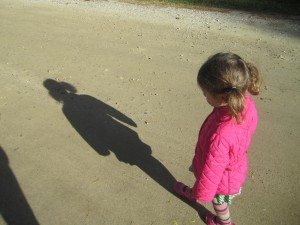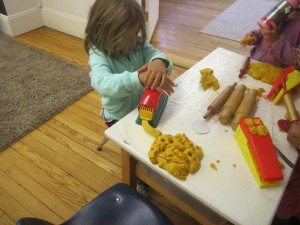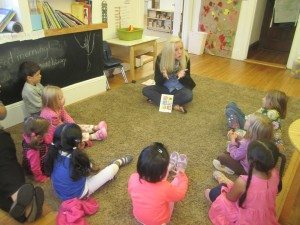Education for most people means trying to lead the child to resemble the typical adult of his society…but for me…education means making creators…You have to make inventors, innovators, not conformists.
Jean Piaget
How can we teachers and parents support discovery, learning, thinking, and transformative, innovative behaviors? We provide a rich environment of materials for exploration and discovery, help children to organize and plan their play, and generate ideas for themes to extend their learning. We monitor play and allow play/discovery to unfold naturally. We help individual children by suggesting where connections can be made among themes. We also model discovery strategies.
What we want to focus on this week is how we support learning through intentional queries. Asking questions is a way to model the logic of learning, and to give children the tools for applying this thinking in other situations. Some questions starters that are always helpful are:
What are some of the ways we can…?
How do you think …?
What do you think is going to happen if …?
What happened when …?
What would it be like if …?
What would change if …?
What can you do next …?
How do you know …?
What about children’s questions? How do we respond to ‘why?’ questions? We like to ask, “What do you think?” Even if the child has difficulty answering, other children pipe in with a lot of ideas, which then bounce off of everyone. This encourages divergent thinking, helps children to realize that there is not only one way of viewing things in this world, and it builds their self confidence by learning that their ideas are valued. Inaccurate and harmful information can be redirected with teacher and/or parent queries.
Our week, though short, was filled with observations and discoveries about materials, shapes, sizes, counting and comparisons. At centers the children investigated the properties of sand and planned and executed designs and constructions with tree cookies, rocks, and branches. We used our senses outside to listen to the leaves rustle, to watch the trees swaying and to look for and gather leaves and flowers. A quote from one walk, “The trees are moving because they are dancing.”
Scientific investigation continued throughout the week with observations like, “The sun melted the water
Guess what! We also found a new playground! Well, the 4’s knew about it, but we teachers and the 3’s felt like we had made a whole new discovery!
Our inside activities included lots of stories. We sketched flowers, we painted some of our rocks and we modeled play dough that we made with spices (cinnamon, turmeric, paprika) for the colors of fall. These individual creations call for planning and organization as well as observation. They require a lot of sensory input and develop small motor skills. They enhance awareness of the natural world around us – looking more deeply at a flower, finding new ways to “see” our rocks, and thinking in transformative ways about the colors of fall. And, they are fun activities!
Of course we had our special subjects, and we got to interact with our 9th grade lunch buddies. We shared lunch with them and then we played outside tag and duck, duck goose. We are so glad we have these buddies! We also had a visit from Nurse Drees who congratulated us on being such good hand washers and taught us about the continued importance of not spreading our germs.
At home we encourage parents to use some of the question starters when doing an activity. We also hope you read regularly with your children. Please do not forget to send in clothes appropriate for cold and/or rainy weather.
For those of you viewing this blog on your iphone or ipad, you can view the pictures here: https://www.flickr.com/photos/bcdtech/sets/72157647254977052/




